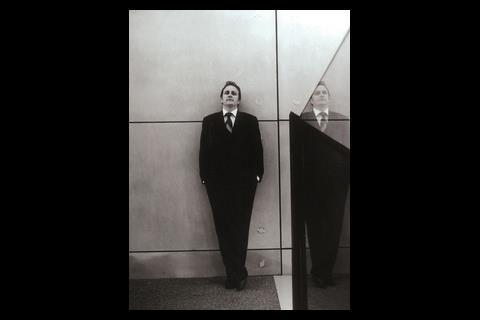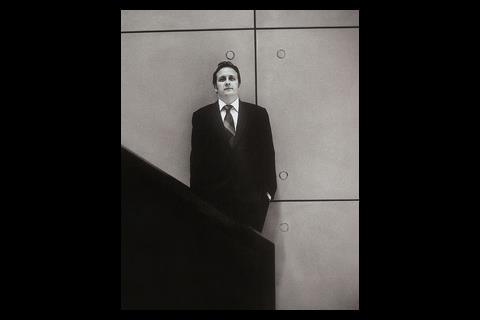Services engineers must be more assertive if BREEAM is to thrive, says Hammerson’s head of sustainability Paul Edwards. He gives Will Jones a pep talk
Paul Edwards, head of sustainability at developer Hammerson, sounds like a services engineer’s ideal client. Unusually, he believes it is the engineer, not the architect, who should take precedence in guiding the direction of a project. �ڶ�����s need to be engineered first, and designed from an architectural perspective second, he says, making the engineer’s targets for things like heat, light, airflow and water consumption the parameters the architect should design to.
“We shouldn't stifle great-looking buildings,” he says, “but, conversely, looks shouldn’t be to the detriment of energy efficiency and indoor environment quality.”
For this to happen, however, engineers must be far more proactive, according to Edwards. “�ڶ����� services engineers are not just installing pipework or standard systems any more. They are coming to the forefront of the construction process and building design. They need to realise that they must test the client with innovative designs and new solutions. We want to be pushed, we want to be challenged, and services engineers have to do that.”
The problem, he says, is that they seem reluctant to take centre stage. “What I see at the moment is an unwillingness to go out on a limb and push alternative systems, and a lack of ability to explain the benefits of their work in terms that the client will understand. Engineers have to stand up to us and ensure that we, as clients, are maximising the potential of our buildings and that all designs are fully integrated. They need to push back if we are to get the best holistically designed buildings.”
Inside knowledge
Edwards is well placed to comment on the role of the services engineer because, while he is a client, he is also a CIBSE member. He started out working at contractor Rosser & Russell, then left the UK in 1996 to travel before joining Arup in Australia as a mechanical design engineer. His work with the firm took him to the US where he “fell into the sustainability game”.
He moved to Lend Lease in Australia in late 2001 as sustainability project manager on the company’s new headquarters, 30 The Bond in Sydney. “The opportunity to work for the client instead of a consultant was exciting,” says Edwards. “And this was the first time that Lend Lease had ventured into sustainable building. It became a catalyst for both Lend Lease and the Sydney commercial market to take on board environmentally friendly construction. The building showed that sustainable design could look like a real office block. It worked on all levels – sustainability from environmental, economic and social aspects.”
The building has won 36 awards, including �ڶ����� of the 2000s from the Royal Australian Institute of Architects, and Edwards picked up the future leader award from the Australian Institute of Refrigeration, Air-conditioning and Heating.
He moved on to national roles for Lend Lease and Bovis Lend Lease before joining Hammerson in February this year, since when he has been instrumental in the realignment of the company’s attitude to sustainability.
All Hammerson’s future projects will be designed to BREEAM Excellent while current projects have been reassessed to take on board energy-efficient design. An in-house sustainability framework has been created to measure and check progress on new and existing properties and sustainability consultants are being engaged for new projects. They will follow Hammerson’s “sustainable implementation plans”, which set out environmental objectives outlined by the stakeholders concerned.
Developers want to be pushed, They want to be challenged, and the services engineers have to do that
Tenants are being given sustainability guides to encourage them to act responsibly and Hammerson offers “green leases” for tenants who fit out properties to a sustainable agenda.
Edwards has no doubt that the services engineer will play a vital role in changing mindsets. “�ڶ����� services engineers are key to creating successful projects nowadays. They deliver the main energy-consuming elements of the building, for one thing, and, they should also be instrumental in setting targets for the architecture to react to. If you take air-conditioning, it obviously relates to the facade. If the facade isn’t designed to deliver a certain level of comfort reducing solar gain and heat ingress – the shortfall will have to be taken up by the air-conditioning, and so on.”
Edwards, however, warns against a growing reliance on renewable technology. “At Hammerson, we are very pushy on the fact that we need to see energy efficiency first. Design an energy efficient building and then tackle any outstanding energy requirements using renewable technologies. The decision to use a wind turbine or solar panel is often forced upon the designers in order to get planning permission, rather than full consideration being given to the building’s passive energy efficient design."
Gaps in understanding
BREEAM points the way and is a good design tool, Edwards believes. But he says it isn’t understood well enough by the people who matter. “Architects and engineers are fine with it. But clients, agents, valuers, everyone in the property process, needs to get a handle on BREEAM for it to have an impact on the way all buildings are designed in the UK. When a property letting agent truly understands the benefits of a BREEAM Excellent building, then he’ll market it to its full potential as a great place to work with lower energy bills, etc, and we’ll see more and more people wanting to buy or let space in buildings of similar quality.”
This train of thought is borne out in Australia, where green building design has been driven by the private sector rather than government diktat. Private-sector clients and tenants understand the Australian �ڶ����� Greenhouse Rating (ABGR) system and Green Star, the equivalent to BREEAM, and they insisted on having buildings rated. The Australian government also stated that it would only move into high ABGR rated buildings. “Developers soon grasped that if you didn’t build sustainably, you didn’t build at all. If you can make BREEAM more accessible to those not directly involved in the design process, you’ll see its uptake rise.
“This,” Edwards continues, “is one reason why Hammerson has joined the UK Green �ڶ����� Council (UKGBC). We see it as an important forum for sharing knowledge and it helps to break down barriers between manufacturers, clients, consultants. Being part of the UKGBC will enable us to effect change, whether by lobbying government or putting across our point with regards to BREEAM.”
Crucially, Edwards believes the industry is at the point where rivals must work together if progress is to be made. “Companies have to share knowledge and pool resources if we are to build a more sustainable environment. And it’s happening; there has been a fundamental shift in the construction industry. Competitors are prepared to sit down together. Government is working with us. We are pushing to make a difference.”
Change won’t happen, however, unless engineers fight their corner more and communicate in a language everyone can understand. “It’s they who create the environment that people work in. If they do this successfully, employees are happier and firms retain staff. Happy workers mean more productivity and more productivity means higher profits,” Edwards says.
“If you tell a client that you are going to up their profits, their ears will prick up much quicker than if you are telling them about stack ventilation.”
Source
�ڶ����� Sustainable Design




















No comments yet